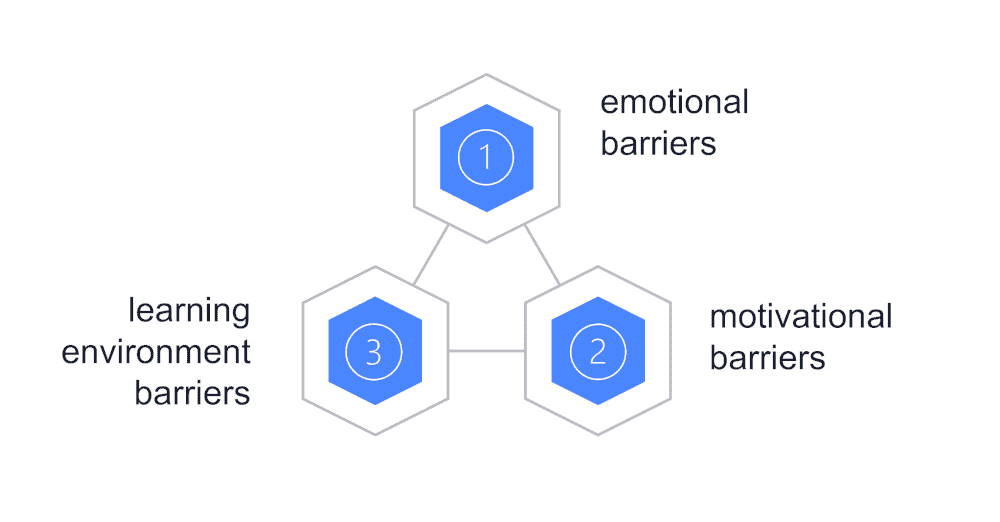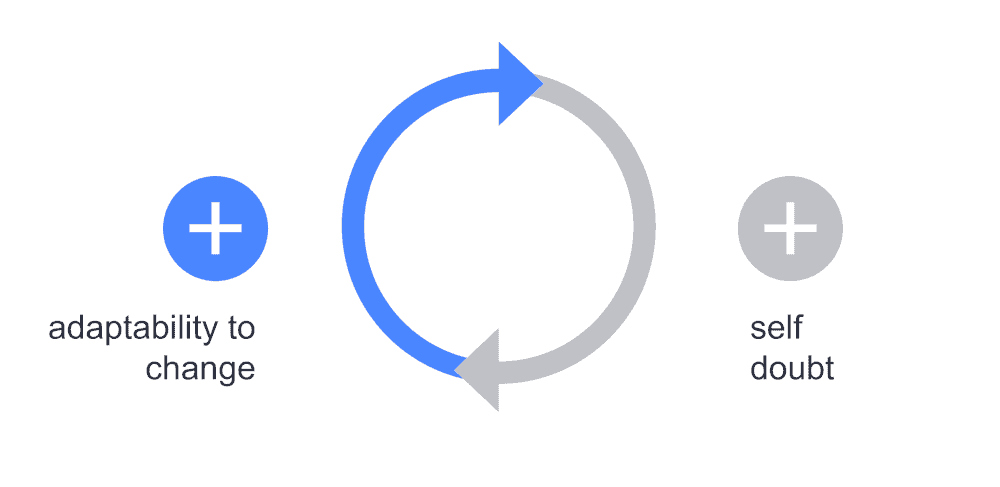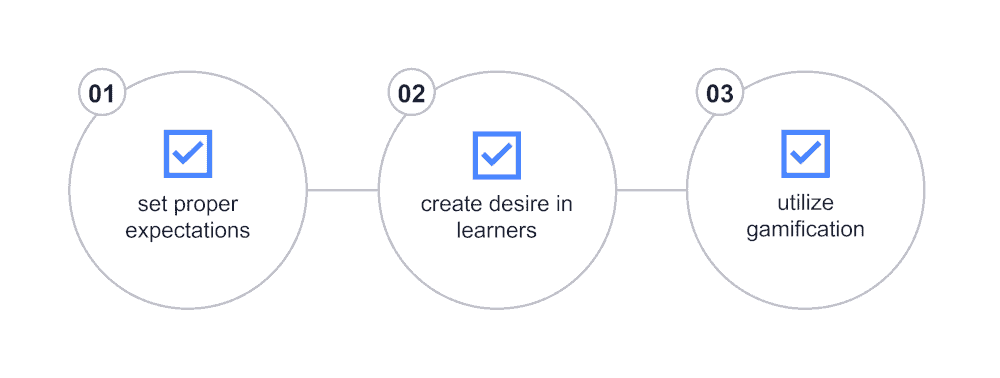Our content is reader supported, which means when you buy from links you click on, we may earn a commission.
Barriers to Learning and How to Overcome them in Online Training

Statistics indicate that only 5 to 15 % of individuals enrolled complete their online courses.
While there are many barriers to learning, these can become more prominent if you’re learning online or you’re trying to learn something new as an adult.
The thought of finally taking that new course to give you the break you’ve been waiting for in your career or your life is exciting!
The truth, however, is that learning can be energy-consuming and require a lot of your time and money. You need to identify the unique set of challenges your learners are likely to face or are already suffering and come up with the right learning solution that will enhance their level of learning.
What are the Barriers to Learning and Development?
Barriers to learning refer to the numerous obstacles learners have to overcome to achieve learning success. While, in some cases, this could be a medical condition, barriers can be extrinsic or intrinsic to the learners.
Obstacles arise as a result of social issues and the economic context of the learner, family, and cultural background or lack of parental involvement for younger learners.
Common barriers include emotional barriers, motivational barriers, and learning environment barriers. We’ll go through each of these in detail next.

Emotional Barriers
The emotional stability of your learners affects their ability to learn. Students with a positive mindset can move past their failures and accomplish learning tasks. On the other hand, students who lack confidence are unlikely to participate during lessons.
Mindsets are often a function of the learners’ experiences and cultural influence and they develop over time. These predominant attitudes can inhibit learning and sap a learner’s motivation. It is essential to engage these learners as they are likely still rehashing their past failures.
Create a nurturing environment for your students, to help them build the right mindset towards learning. Speak enabling words to students who are fretful so that they feel valued and safe.
Emotional barriers to learning are often caused by self-doubt and difficulty adapting to change.

Self-doubt makes some learners feel they will never accomplish as much as others. The fear of failure can be a result of a previous experience of failure that was not managed.
Learners have different levels of adaptability to change, which directly impacts their learning process. Where learners are resistant to new technology, you can offer additional tools on the eLearning platform such as live support for their technical glitches or content queries.
Ways of combating emotional barriers to learning include:

Set Proper Expectations For Your Learners
Learning a new thing or a new skill requires time. Set the right pace for all your learners and encourage them to speak out about their uncomfortable feelings when the task at hand is challenging. Have a time schedule that dictates when the Learning module will be completed.
Create a Desire in Learners
When learners want to get to the end result, they are more willing to go through something uncomfortable. Define the overall vision of the course by listing the learning goals and objectives you want your students to achieve. Align this vision to match the life purpose of your learners. Once this sinks in, learners will be willing to make more sacrifices to complete their learning.
For example, when carrying out training in sales and marketing, give performance statistics in sales by comparing the performance of those who have completed courses in marketing as opposed to those who have not. Such statistics help to build purpose in the course.
Utilize Gamification
Typical elements of gaming, such as competition with others, and point-scoring encourage learner engagement while making your lessons more enjoyable. Gamification also reduces students’ levels of stress and break the monotony of learning.
Motivational Barriers
Lack of goals and purpose fuels procrastination. Learners who feel they have no life purpose fail to appreciate available learning opportunities.
Short term and medium-term goals encourage learners to get to a place where their learning experience becomes important to them. This assists in creating focus. Getting through simple tasks is motivating and leads to completing more difficult tasks later on.
Motivational barriers to learning include the following:

Procrastination
Learners are more likely to put off tasks they see as overwhelming. Keeping the tasks short and using microlearning strategies will help as well as including gamification where possible. Encourage learners to complete tasks that can be accomplished on the same day.
Lack of Sense of Community
Learners need to experience a sense of connection among themselves to achieve social engagement. When training adult learners, they need to feel a sense of community to allow them to share their experiences and learning challenges comfortably. It is essential to make adult learners have a sense of belonging to improve the learning process. Safety and love form some of Maslow’s hierarchy of needs.
Learning Environment Barriers
One of the biggest barriers to the learning experience is the learner’s environment. An inappropriate learning environment impedes the ability of the students to hear lessons as well as concentrate. Encourage them to find a quiet learning space with a sustainable internet connection and minimal interruptions.
Here are the most common learning environment barriers:

Offline and Online Distractions
Encourage learners to focus on the course by minimizing distractions. Online distractions could involve responding to work emails during the lesson or visiting social sites. It can also include the design of the course itself. Some online courses look cluttered, the navigation menu is complex or a variety of other factors.
You can alleviate these problems by following the methods of C.R.A.P. design (yes that’s a real thing!).
Lack of Technical Skills
Not every learner is digital-savvy or has technical experience. Online learning platforms are not always as user friendly as learners need. Learners may waste crucial time and energy as they struggle to navigate through the courses. This is especially more difficult for some less technically inclined adult learners.
To help eliminate this, you can create simple tutorials with an added walkthrough that can act as a reference point. Choosing a professional online course platform will also help since these aim to provide a well-designed user interface.
Course Presentation or Format
The course outline and presentation can affect your learner’s ability to retain and absorb knowledge. Properly structuring your course into manageable portions will help. Also, keep in mind that the success of your course is based on your ability to train as well as keeping your learners engaged. Ensure the quality of the videos used is excellent and that you do not act as a distraction to the learning process either through your language or mode of dressing.
Trainer Incompetence
An incompetent trainer lacking confidence can also impede your learner’s ability. Build on your communication and leadership skills to become an effective trainer. Where possible, carry out an analysis of your learners so that you are at par with their experiences.
FAQs on Barriers to Learning
What are external barriers to learning?
External barriers to learning are anything that impedes our ability to take in new information or inhibits our ability to apply what we have learned. Some external barriers are external factors we cannot control, such as illness, a noisy environment, or distractions. Other external barriers, on the other hand, are things we can control, such as not paying attention, daydreaming, or being tired.
We can also put up external barriers to learning by refusing to accept new information or by clinging to old ways of doing things even when they no longer work. Fortunately, we can overcome most external barriers to learning by making a conscious effort to pay attention and by taking steps to eliminate distractions.
What are the systemic barriers to learning?
Systemic barriers to learning are the systemic obstacles that prevent learners from achieving their fullest potential. They can be environmental, cultural, financial, or political.
Systemic barriers might include a lack of resources in schools or discriminatory practices. They can also include a lack of internet or school district boundaries. Lacking resources makes it difficult for students to get to school or receive a quality education.
What are physical barriers to learning?
A physical barrier to learning can be anything that makes it difficult for a student to access education. That might include a physical disability, illness, poverty, or a lack of resources.
For example, a child with a physical disability might not be able to attend school because there are no ramps or accessible classrooms. A child from a low-income family might not be able to afford school materials or appropriate clothing for the weather.
What are socioeconomic barriers to learning?
Socioeconomic barriers to learning can take many different forms. For some students, it may be a lack of access to resources like books or computers. For others, it may be a lack of financial stability, which can make it difficult to focus on schoolwork.
Socioeconomic barriers can also include a lack of social support, such as having parents who are not invested in their child’s education. These barriers can often have a profound impact on a student’s ability to succeed in school.
How do you overcome barriers to learning?
To overcome physical barriers, technology is a necessity. Presently, there are many assistive devices to help people with physical disabilities overcome their barriers. For other barriers to learning, it’s all about finding the right learning method for you. Some people learn best by listening to audiobooks, some by reading texts, and others by watching videos.
How do barriers to learning affect learning and teaching?
A big barrier to learning is language. If students can’t understand the teacher or vice versa, they will have a very difficult time learning. Another common barrier is culture. If students come from homes or communities that don’t value education, they may not take education seriously. The point is, when there’s a barrier to learning, it becomes harder for both teachers and students to do their jobs.
Conclusion
While technological advancement and internet development have significantly impacted our approach to training, it has also brought with it its own set of learning barriers. These, however, can be overcome through learner engagement and by making needful changes to our learning environment.
A positive mindset helps because some of the barriers stem from the learners and are personal in nature. Your call to action is to identify the specific challenges of your learners and come up with engaging ways to enhance their eLearning experience. When this is achieved, learners will overcome their barriers and have a more productive learning experience.